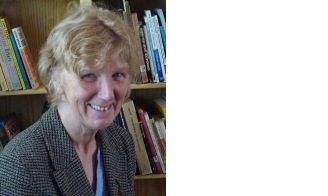CATHERINE BURKE - A place which permits the joy in the small things of life and democratic living
ARCHITECTURE OF EDUCATION: COMMUNITIES AND INNOVATIONS
Education was regarded as a vital component of the strengthening of democracy in the immediate aftermath of the Second World War. In England, the extensive school building programme embarked on involved a generation of architects and educators committed to public engagement. The idea was to see how far it was possible, through the opportunities of national school building renewal, to (without discouraging teachers who preferred traditional methods), encourage those teachers who were exploring approaches that more fully utilised space and equipment.
This presentation will explore some of the major influences on the international effort to design the modern school, fit for purpose in the post war decades. It will examine the particular influence of Crow Island School, Winnetka, north of Chicago, USA on European school architecture and education.
The conversation is arranged in collaboration with VGTU Faculty of Architecture.
The talk is held on February 1st at the National Art Gallery (NDG), Konstitucijos av. 22, Vilnius.
Event starts at 8 p.m. Entrance is free of charge. Lecture will be held in English.

Catherine Burke is currently Reader in History of Childhood and Education at the Faculty of Education, University of Cambridge. Her research interests: material cultures of childhood and education; the historical and contemporary relationship between pedagogy and architecture in learning environments; and visual methods in incorporating a child’s view in research.

Histories of twentieth-century architecture seldom consider how respective artistic and design communities have utilised and represented childhood in their efforts to transform the discourses and practices of their professions. Roy Kozlovsky argues in this fascinating book that architecture as a ‘technology of power’ can be understood to have undergone a significant transformation in the post-war world and that change relied to a large extent on a turn to take seriously the subjective experience of urban childhood. The Architectures of Childhood an important and valuable book that explores the potential of creating new knowledge by bringing together the disciplines of childhood studies and architectural history in examining discourses and practical design experiments in post-war England.
